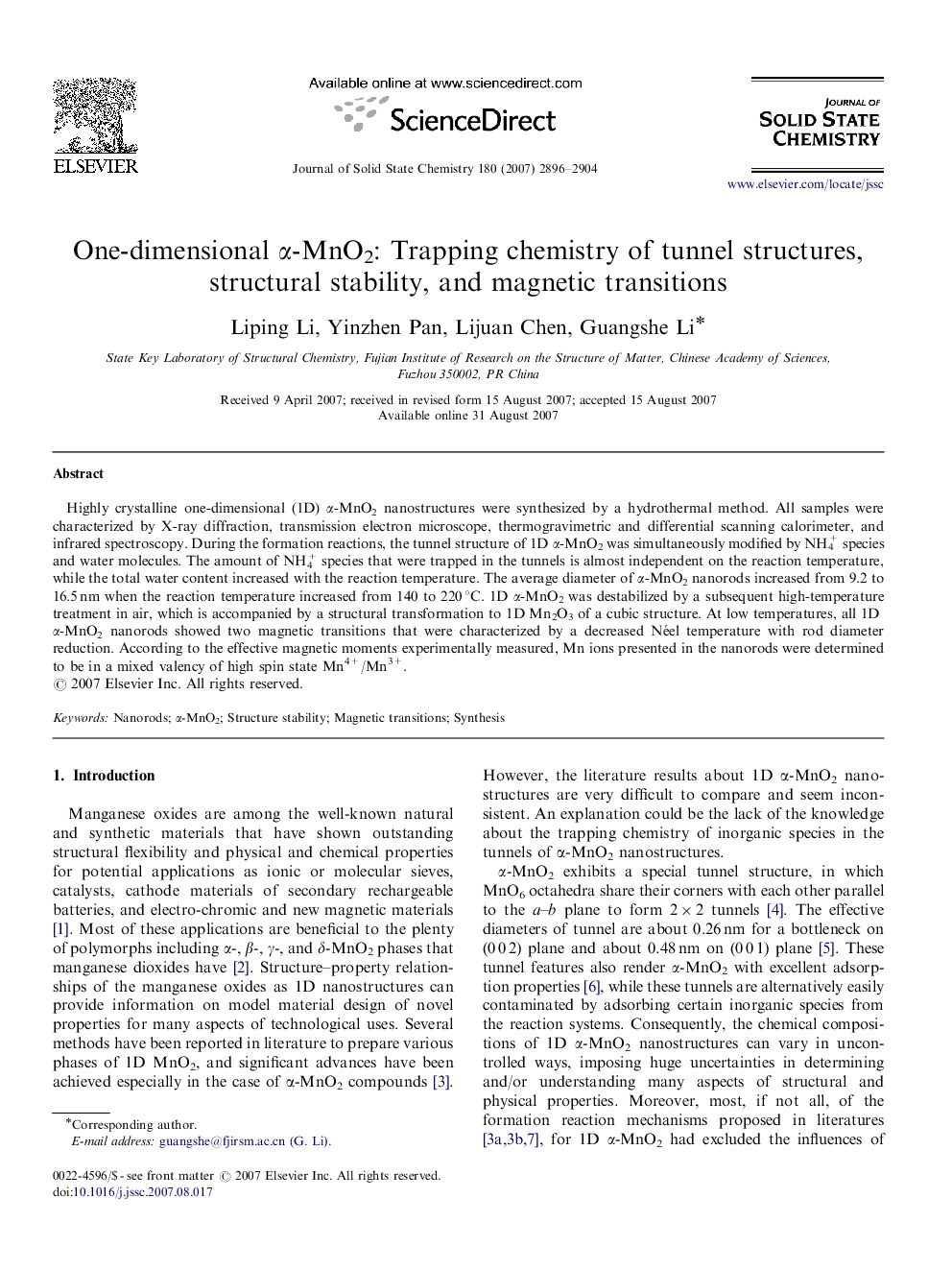| Article ID | Journal | Published Year | Pages | File Type |
|---|---|---|---|---|
| 1331465 | Journal of Solid State Chemistry | 2007 | 9 Pages |
Highly crystalline one-dimensional (1D) α-MnO2 nanostructures were synthesized by a hydrothermal method. All samples were characterized by X-ray diffraction, transmission electron microscope, thermogravimetric and differential scanning calorimeter, and infrared spectroscopy. During the formation reactions, the tunnel structure of 1D α-MnO2 was simultaneously modified by NH4+ species and water molecules. The amount of NH4+ species that were trapped in the tunnels is almost independent on the reaction temperature, while the total water content increased with the reaction temperature. The average diameter of α-MnO2 nanorods increased from 9.2 to 16.5 nm when the reaction temperature increased from 140 to 220 °C. 1D α-MnO2 was destabilized by a subsequent high-temperature treatment in air, which is accompanied by a structural transformation to 1D Mn2O3 of a cubic structure. At low temperatures, all 1D α-MnO2 nanorods showed two magnetic transitions that were characterized by a decreased Néel temperature with rod diameter reduction. According to the effective magnetic moments experimentally measured, Mn ions presented in the nanorods were determined to be in a mixed valency of high spin state Mn4+/Mn3+.
Graphical abstractHighly crystalline one-dimensional (1D) α-MnO2 nanostructures were achieved to have tunnel structures modified by NH4+ species and water molecules. By tuning the diameters. 1D α-MnO2 showed two magnetic transition as indicated by hump and kink peaks at low temperatures. Mn ions presented in 1D α-MnO2 were determined to be in a mixed valency of high spin state Mn4+/Mn3+.Figure optionsDownload full-size imageDownload as PowerPoint slide
